Portraits in Motion: Joel Swanson's "People and Other Living Things" at 22 North Gallery

Right: Joel Swanson, Walt, 27”x48, 2019, 10-minute 4k video. Photo by K.A. Letts.
In his first solo gallery show, People and Other Living Things, Joel Swanson brings his considerable powers of observation—honed by years as a research microbiologist—to the examination of his fellow human beings.
On view weekends throughout the month of July 2022 at 22 North Gallery in Ypsilanti, the exhibit is a mix of several bodies of his work that may, on the surface, seem unrelated yet reflect different aspects of Swanson’s interest both in what can be seen by the naked eye and in what lies beneath the reach of our physical perceptions.
Swanson says in his artist’s statement:
Bits & Pieces: "The Small Details: Amy Sacksteder and Brenda Singletary" conjure meaning through assemblages at U-M's Institute for the Humanities Gallery
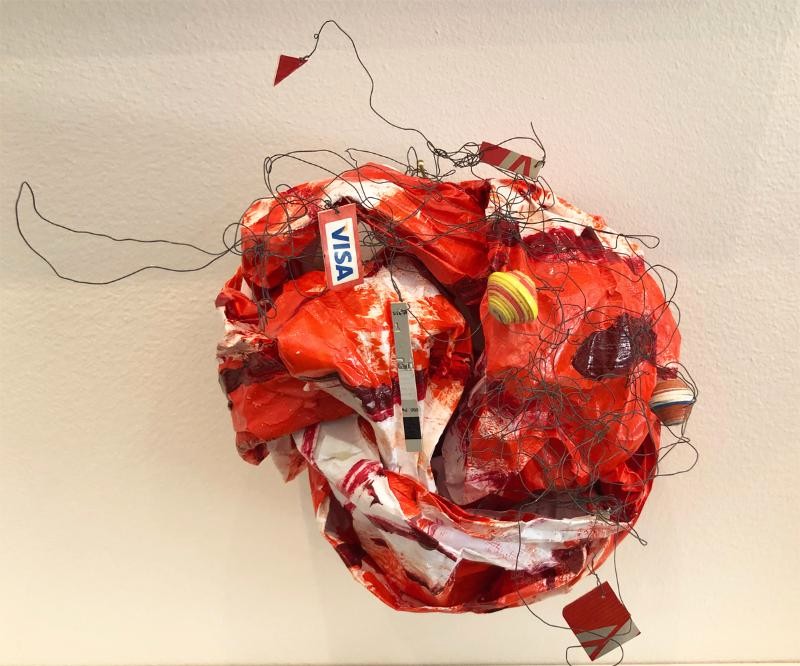
It all adds up in The Small Details, a two-person exhibition on view now through July 29 at the Institute for the Humanities Gallery in Ann Arbor.
Through accretion, addition, and accumulation Amy Sacksteder and Brenda Singletary conjure meaning from bits and pieces—ceramic and glass shards, wire, photos—assembling personal narratives that are highly specific in their material, but universal in their intent.
Ann Arbor's Creal Microgallery offers tiny exhibitions for unsuspecting pedestrians
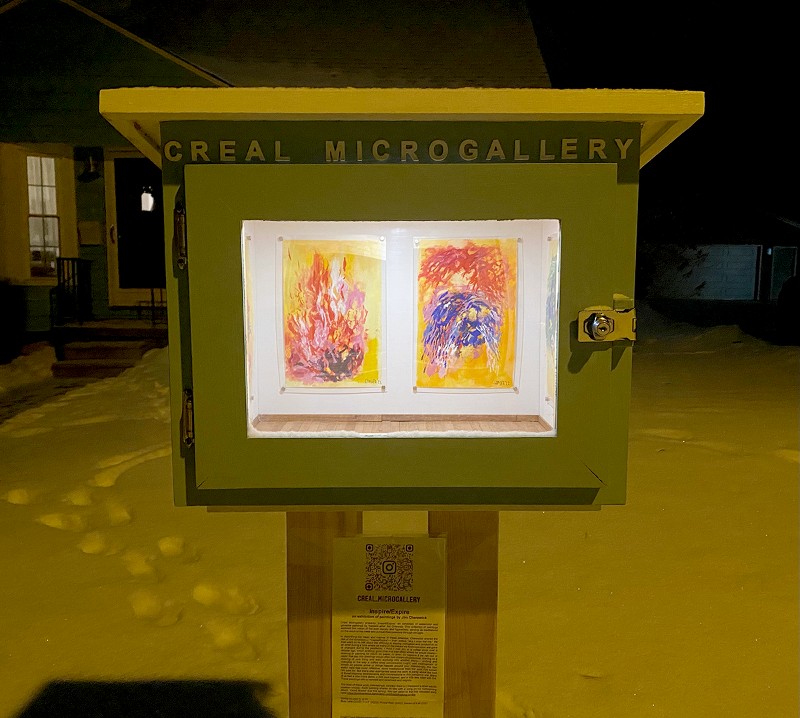
The first reaction a pedestrian might have upon encountering the Creal Microgallery in suburban Ann Arbor might be amusement. This tiny, breadbox-sized art space on Creal Crescent, not far from the North Maple Road and Miller Avenue intersection, resembles one of those little free libraries often found on residential streets. It provides curbside delivery of fine art to passers-by from dawn to 11 pm daily. This may not be a grand structure like the elegant Stettheimer dollhouse in the Museum of the City of New York, with its tiny masterpieces by Alexander Archipenko, Gaston Lachaise, and Marcel Duchamp, but it’s no joke either.
The microgallery’s founder and curator, Joe Levickas, was inspired to start the project by dislocations in his life during the COVID-19 pandemic. He describes bringing up his idea for the gallery with his wife. “What if we put up a gallery in our front yard?” A real team player, she replied, “You should totally do it.” He acquired a 16”x10”x12” box with a glass front, painted it robin’s egg blue to match his house, and the rest is (art) history.
Ann Arbor Gallery Crawl: Catching up with recent exhibits and new art spaces
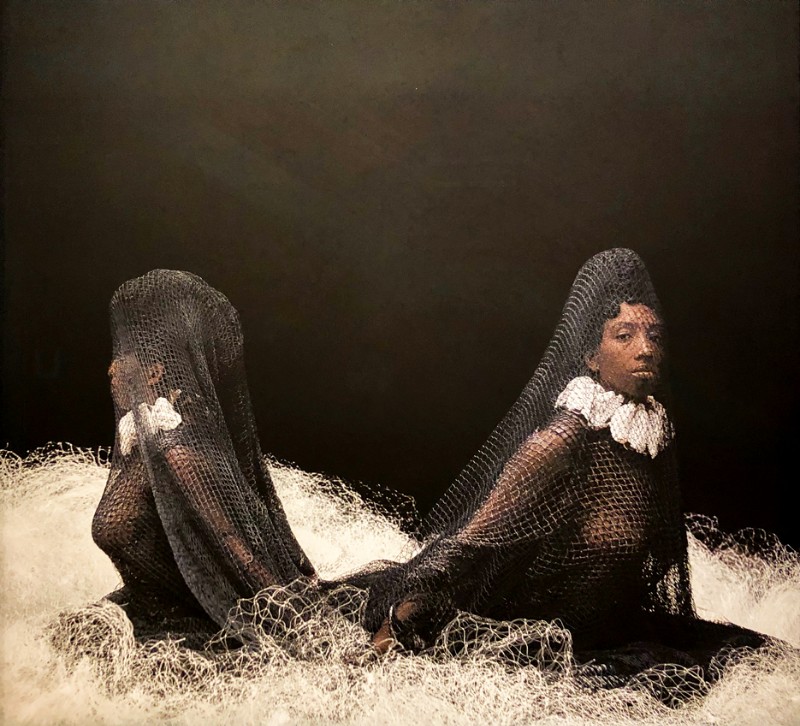
Double Goddess: A Sighting in the Abyss by Ayana V. Jackson at A2AC Gallery. Photo by K.A. Letts.
COVID-19 has wrecked plans and canceled events for nearly two years (and counting). It has sabotaged the momentum and slashed the incomes of Ann Arbor’s small community of visual artists and galleries, leaving a cultural landscape greatly altered in ways large and small.
But the creatives here are nothing if not resourceful and, well, creative.
My recent tour of the art spaces and non-profits in Ann Arbor and environs left me encouraged—and impressed—by the resilience of the city’s art community. Here are some of the changes I came across while reintroducing myself to the local art scene in early December 2021:
Shizu Saldamando’s exhibit "When This Is All Over/ Cuando Esto Termine" captures the anxiety and depression of pandemic art

Over the past year, I've come across artwork that exemplifies what I would describe as a new genre: pandemic art. A significant number of emerging creatives are making work that displays a high level of anxiety and depression brought on by their isolation and a well-founded sense that their lives, plans, and ambitions have been put on hold. Shizu Saldamando’s solo exhibition When This Is All Over / Cuando Esto Termine, on view at the University of Michigan Institute for the Humanities Gallery until December 10 and curated by Amanda Krugliak, is yet another example of this distressed trend.
It's clear that the COVID-19 pandemic has been particularly difficult for early career professional artists like Los Angeles painter Shizu Saldamano. Her diverse circle of friends, many of them Latinx and/or LGBTQ, represent a cross-section of young creatives eking out their existence in L.A.’s gig economy. Right now, they are pursuing their avocations—as musicians, artists, DJs, and the like—in the midst of economic and medical uncertainty.
They are the subjects of Saldamando’s large portraits.
Review: "Story Word Sound Sway" exhibit at Stamps Gallery
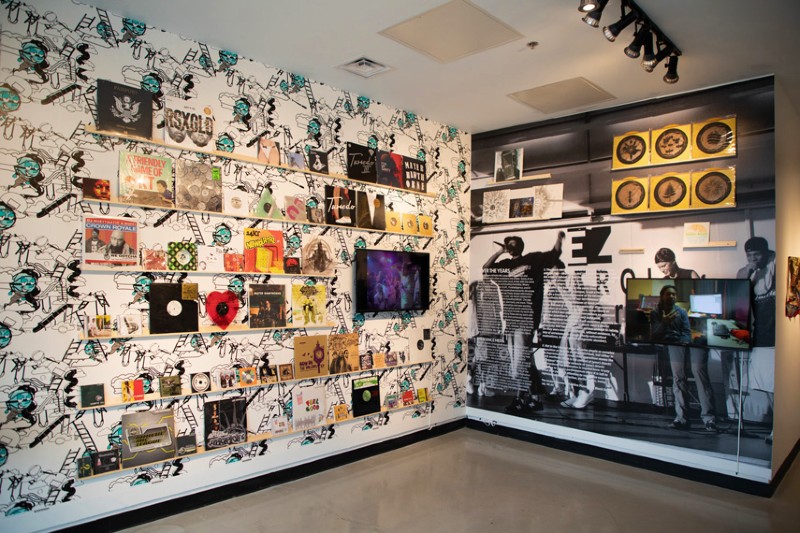
The MFAs and BFAs produced each year by the nation’s academic art programs far exceed the ability of the art establishment—fine art galleries, museums, collectors, and the like—to absorb them.
What happens to all those aspiring and hopeful young creatives upon graduation?
How do contemporary artists pay rent and continue to work in a world that doesn’t reliably support them financially?
The Story Word Sound Sway exhibit at Stamps Gallery from now until February 28 provides a provocative answer of sorts.
Map of the Interior: Sarah Rose Sharp’s "Results or Roses" at U-M Institute of the Humanities Gallery
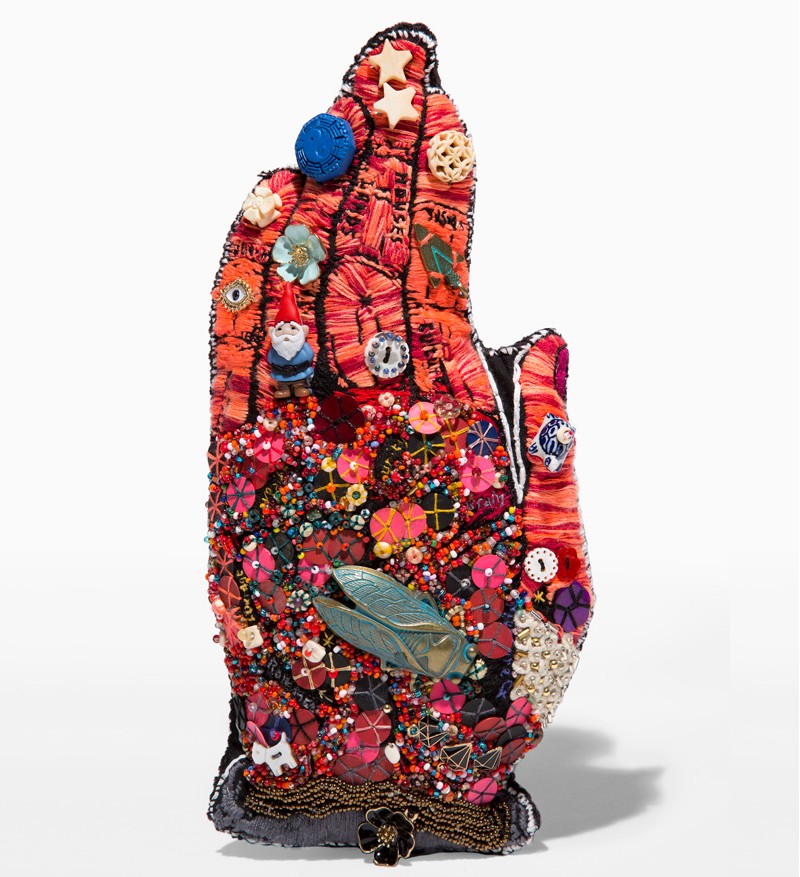
During these Covid times, visual artists’ exhibitions have migrated to online locations, with mixed results. For some whose work is photographic or text-based in nature, the effect is hardly noticeable. But for artists making very tactile or three-dimensional work, like the artworks in Detroit artist Sarah Rose Sharp’s Results or Roses at U-M Institute of the Humanities Gallery, much is lost in translation. I felt some guilty delight when the gallery curator, Amanda Krugliak, consented to open the gallery (now temporarily closed to the public during the pandemic) for my visit, but you can still view the exhibit online.
Sharp employs traditional needlework and sewing techniques to create a diaristic map of her interior life. The intimately scaled artworks illustrate several different trains of the artist’s thought and share the walls of the gallery and an adjacent vitrine, providing a virtual tour of the artist’s memories, observations, and preoccupations. The overarching intention of the work seems to be located somewhere in the psychic territory between nostalgia and satire.
Fright of the Honeybee: "Hive/Mind ii" at 22 North Gallery
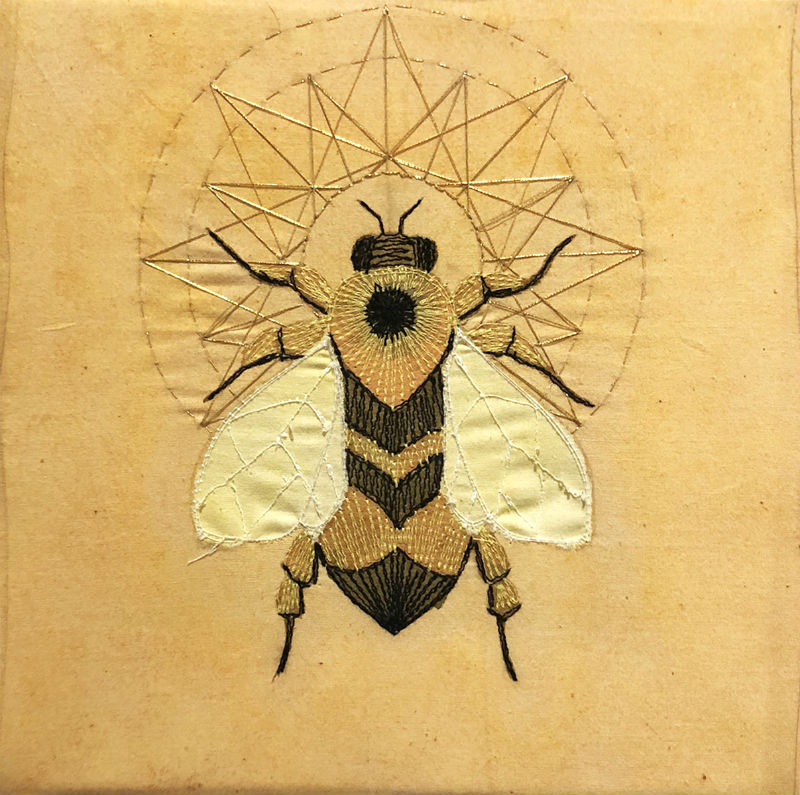
The artists in the juried exhibition Hive/Mind ii at 22 North Gallery in Ypsilanti until September 28 have been thinking about honeybees -- a lot. The subject comes up once a year in September. This is the seventh iteration of the citywide Festival of the Honeybee, which includes honey tastings, musical performances, children's activities -- and this exhibition.
The years since the inauguration of the festival have been eventful -- and not in a good way -- for this most useful and industrious of insects. As colony collapse disorder forces a public discussion of the damage humans can and do inflict on the environment, the artists of Hive/Mind ii creatively contemplate the relationship between human and honeybee as a metaphor for our relationship with the environment. Jurors Jessica Tenbusch, Elize Jekabson, Nan Plummer, and Maggie Spencer have selected artworks that reflect a range of media and conceptual approaches to the subject.
Upon entering the gallery, visitors will see a richly colored painting by Kentucky-based artist Michele Newby Armstrong that incorporates the hexagonal cells of bees with what appears to be collaged advertising for the suspected culprit of colony collapse disorder, neonicotinoid pesticides. The artist makes extensive use of stencils that repeat the motif of cell and honeybee, resulting in a pleasing artwork that belies the underlying somber theme. Nearby, ceramic artist Jon Van Eck’s honey bee jug is a black-and-yellow presence. His usually comic tone is subdued here, but still cheerful and technically impressive.
"Textures of Detroit" at Concordia University’s Kreft Gallery feels like two exhibitions at once
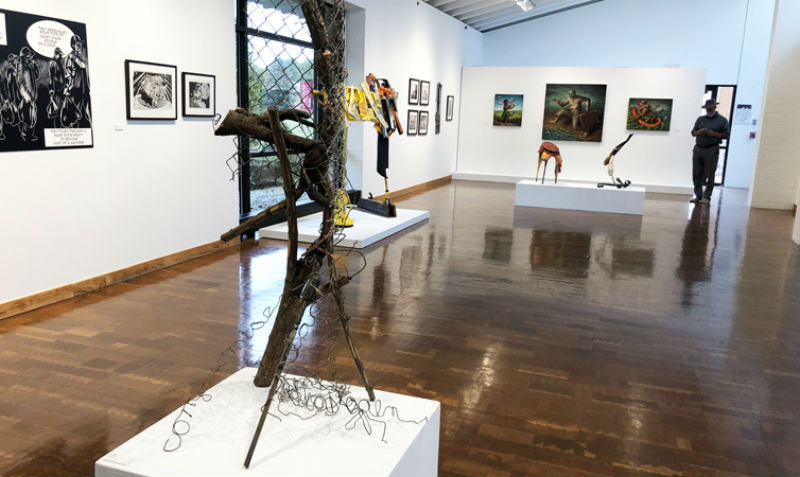
Textures of Detroit, now on exhibit in Concordia University’s Kreft Gallery through October 23, presents the work of six Detroit artists as they respond to their urban environment through the prism of personal experience. It’s an odd, conjoined-twin sort of exhibit.
There are really two exhibits on view here. In Exhibit A, with Matt Corbin, Ann Smith and Carole Harris, who take their inspiration from the materiality of the city, a time-honored Detroit method recently highlighted in Landlord Colors at Cranbrook Museum of Art. And then there’s Exhibit B: in which Roy Feldman, Carl Wilson, and Peter Bernal observe and report on the human dimensions of Detroit.
Painting the Everyday: Sarah Innes' "Around the Table" at Ann Arbor Art Center focuses on the small moments in life

Ann Arbor artist Sarah Innes is a radical.
The fashion of the day in contemporary art is that we concern ourselves with the Big Issues: gender equality, climate change, gun violence, and the like.
Instead, Innes commits to painting only what she knows, deep in her bones.
She knows that life is precious and brief and consists of moments strung together like pearls on a necklace. She knows that children are born, make fun and mischief, move away. Parents, friends, colleagues, and significant others visit and dine, celebrate birthdays and anniversaries. Pets appear under the table and nestled in arms. Sometimes there is a death.
Around the Table, a small selection of her intimate paintings, is on view now at the Ann Arbor Art Center through July 23. Innes employs the image of the dining table, both as an organizing compositional device and as a metaphor for her life. Minute changes in the menu, changing seasons and an ever-mutating cast of characters provide a travelogue of her journey through time.


































